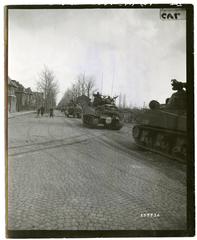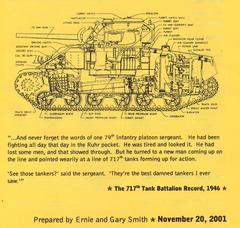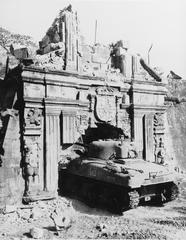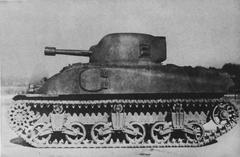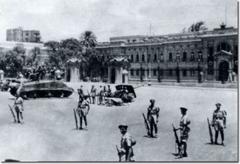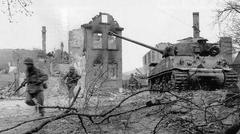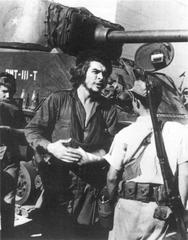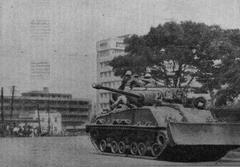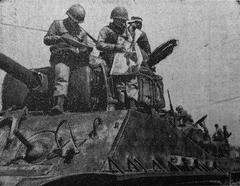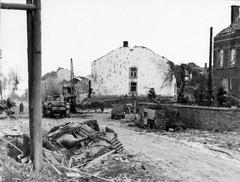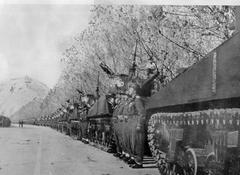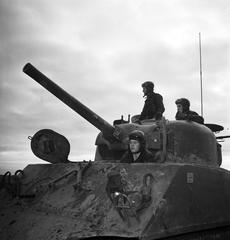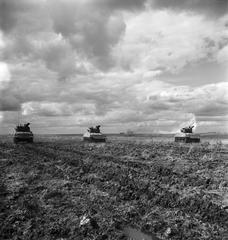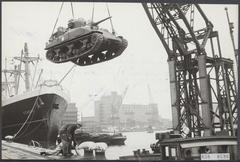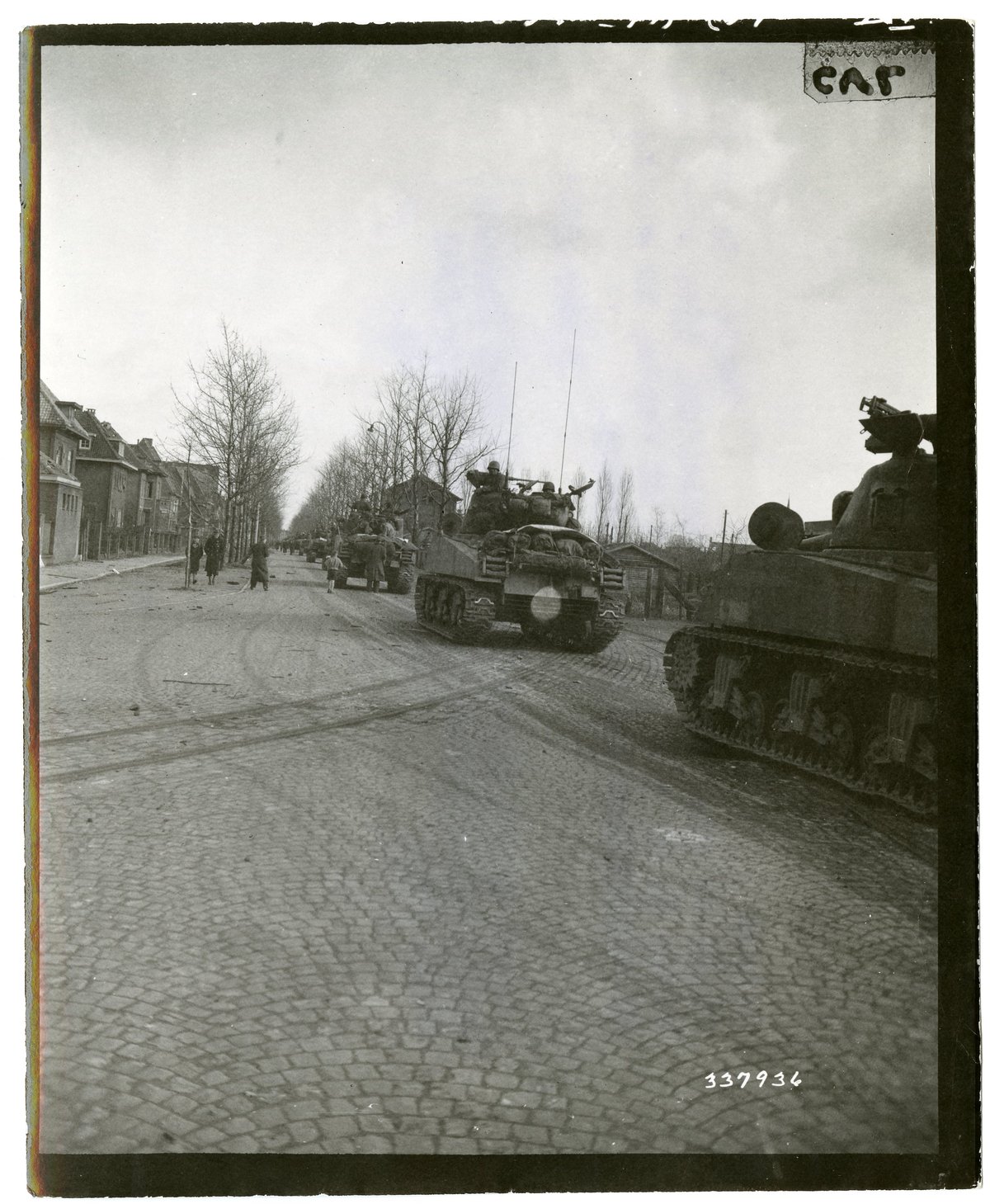
M4 Sherman Tank Buenos Aires: Visiting Hours, Tickets, and Historical Significance
Date: 14/06/2025
Introduction
The M4 Sherman tank stands as a symbol of World War II armored warfare, celebrated for its mechanical reliability, mass production, and impact on the outcome of the conflict. Designed in the United States in 1940 to replace the M3 Lee, the Sherman became the most-produced American tank of World War II, with more than 49,000 units built (britannica.com; tanks-encyclopedia.com). Its adaptability made it a keystone not only in Allied operations but also in the military modernization of nations such as Argentina, where it became a central component of armored forces for decades (warhistoryonline.com).
In Buenos Aires, the M4 Sherman tank is both a historical artifact and a monument to Argentina’s postwar military development. From open-air displays like the monument at Paseo Colón to detailed exhibits in national museums, the Sherman tank offers visitors a window into global and Argentine military history. This comprehensive guide covers everything you need to plan your visit: historical background, visitor details—including hours, ticketing, and accessibility—nearby attractions, travel tips, FAQs, and more.
Contents
- Origins and Development of the M4 Sherman
- Global Deployment and Allied Use
- Technical Characteristics and Battlefield Role
- Postwar Service and Legacy in Argentina
- Where to See the M4 Sherman in Buenos Aires
- Locations and How to Visit
- Hours, Tickets, and Accessibility
- Guided Tours and Special Events
- Nearby Attractions
- Cultural Impact and Educational Value
- Photographic Tips
- Frequently Asked Questions (FAQ)
- Planning and Resources
Origins and Development of the M4 Sherman
The M4 Sherman, officially the Medium Tank, M4, originated in 1940 as a response to rapid advancements in armored warfare during World War II. Building on the earlier M3 Lee, the Sherman introduced a fully rotating turret with a 75mm main gun, vastly improving battlefield flexibility (tanks-encyclopedia.com). Production began in 1941, and by 1945, more than 49,000 had rolled off American assembly lines (britannica.com). Its robust mechanics, modular design, and ease of maintenance made it a favorite among crews and commanders alike (tankmuseumshop.org).
Global Deployment and Allied Use
The Sherman formed the backbone of Allied armored forces in WWII, serving the U.S., Britain, Canada, Free French forces, and the Soviet Union (via Lend-Lease) (warhistoryonline.com). Its adaptability led to numerous variants, including the British Firefly with a powerful 17-pounder gun. Shermans saw action in every major theater: North Africa, Europe, and the Pacific (britannica.com).
Technical Characteristics and Battlefield Role
The standard Sherman featured a 75mm or 76mm main gun, .50 and .30 caliber machine guns, and armor up to 118mm thick in later versions. While not as heavily armored or armed as German Panthers or Tigers, the Sherman excelled in reliability and numbers. U.S. doctrine emphasized combined arms tactics, using Shermans for infantry support and breakthroughs, rather than dueling enemy heavy tanks (warhistoryonline.com).
Postwar Service and Legacy in Argentina
After WWII, surplus Shermans were sold worldwide. Argentina acquired nearly 450 Shermans in the late 1940s, including over 250 Firefly variants (warhistoryonline.com). These tanks modernized Argentina’s armored forces, with many upgraded in the 1970s to the “Repotenciado” standard—featuring new diesel engines and 105mm cannons. The Sherman remained in Argentine service until the 1990s, influencing local tank development and military doctrine (tank-afv.com).
Where to See the M4 Sherman in Buenos Aires
1. Outdoor Monument at Paseo Colón
Location: 198 Paseo Colón, Monserrat, Ciudad Autónoma de Buenos Aires, Argentina
Coordinates: -34°36’36.387” S, -58°22’8.354” W
(Tripomatic)
- Hours: Open 24/7, best viewed in daylight (8:00 AM – 6:00 PM)
- Admission: Free
- Accessibility: Wheelchair accessible; paved sidewalks; public restroom facilities nearby
This centrally located outdoor display is easily reached by bus or Subte Line C (San Juan or Independencia stations). The tank is visible from the street and perfect for photography.
2. Museo de Armas de la Nación Tte. Gral. Pablo Riccheri
Address: Av. Santa Fe 702, C1059ABO, Buenos Aires (inside Paz Palace)
Hours: Tuesday to Thursday, 11:00 AM – 6:30 PM
Admission: ~500 ARS (subject to change)
Accessibility: Contact museum for access information
Website: histarmar.com.ar
- Highlights: Indoor display, interpretive panels, technical details, historic context
- Photography: Usually permitted, check policies onsite
3. Argentine Army Museum (Museo del Ejército Argentino)
Address: Avenida del Libertador 1975, Buenos Aires
Hours: Tuesday to Sunday, 10:00 AM – 5:00 PM (Closed Mondays)
Admission: 200 ARS; free for children under 12/military
Website: ejercito.mil.ar/museo
Accessibility: Wheelchair accessible
- Exhibits: Sherman Repotenciado, Firefly variants, detailed historical displays
- Guided Tours: Available weekends/by appointment (Spanish, English on request)
- Nearby: Campo Argentino de Polo, Bosques de Palermo, Museo Nacional de Bellas Artes
Cultural Impact and Educational Value
The M4 Sherman’s legacy extends from film and literature to museums worldwide, such as The Tank Museum in Bovington, UK, and prominent displays in Buenos Aires (tankmuseum.org). In Argentina, the Sherman symbolizes postwar modernization, technological adaptation, and international cooperation.
Museums enhance the experience with multimedia, archival photos, and veterans’ stories, making the Sherman a valuable educational resource for all ages.
Photographic Tips
- Best Lighting: Early morning or late afternoon
- Angles: Capture the rounded turret, sloped armor, and unique markings
- Interior Shots: Not permitted for outdoor tanks; inquire at museums about special access
Frequently Asked Questions (FAQ)
Q: What are the visiting hours for the outdoor Sherman tank at Paseo Colón?
A: Accessible 24/7, but daylight hours (8:00 AM – 6:00 PM) are recommended for safety and photography.
Q: Is there an admission fee to visit the tank monument?
A: No, it is free of charge.
Q: Are museum Shermans accessible to people with disabilities?
A: Yes, the Army Museum and most museum exhibits are wheelchair accessible.
Q: Can I enter the tank?
A: No, tanks are static displays; interior access is not permitted except during rare special events.
Q: Are guided tours available?
A: Yes, especially at museums. Language options and schedules vary—contact venues in advance.
Planning and Resources
Nearby Attractions
- Plaza de Mayo & Casa Rosada: Major historic sites near Monserrat
- San Telmo: Colonial architecture, markets, and tango
- Campo Argentino de Polo & Bosques de Palermo: Cultural and green spaces near the Army Museum
Visitor Tips
- Check Hours: Museum opening times and ticket prices may change; confirm ahead via official websites
- Public Transport: Both outdoor and museum sites are easy to reach via bus or Subte
- Amenities: Cafés, restrooms, and shops are close to all main sites
- Safety: Standard urban precautions apply; Monserrat and Palermo are safe during the day
References and Further Reading
- Sherman tank, Britannica
- M4 Sherman Medium Tank, Tanks Encyclopedia
- What Happened to Argentina’s Shermans? War History Online
- The Tank Museum Guide to the Sherman M4 Medium Tank, War History Online
- Museo del Ejército Argentino
- M4 Sherman Tank in Buenos Aires, Tripomatic
- Tank AFVs: Argentinian Tanks
- Waymarking: M4 Sherman
- Surviving Sherman Fireflies, Scribd
- Buenos Aires Tourism Website
- Argentine Ministry of Defence
- History of the Sherman Repotenciado Tanks, Tanks Encyclopedia
- Buenos Aires Military Museums Guide
- Visiting Historical Sites in Buenos Aires
By including the M4 Sherman tank in your Buenos Aires itinerary—whether at the outdoor monument or in one of the city’s military museums—you’ll gain a deeper appreciation for both global military history and Argentina’s own technological evolution. For the latest updates, download the Audiala app or follow museum and tourism social media channels.
